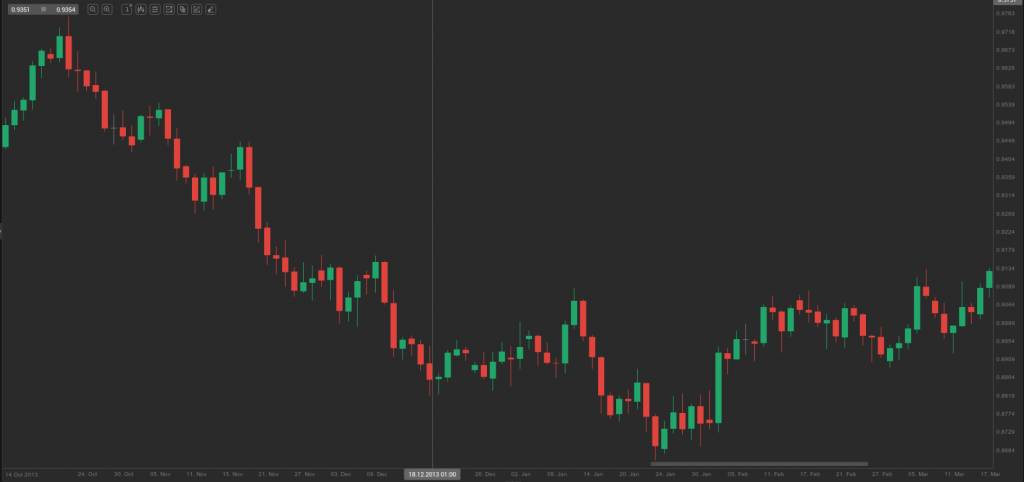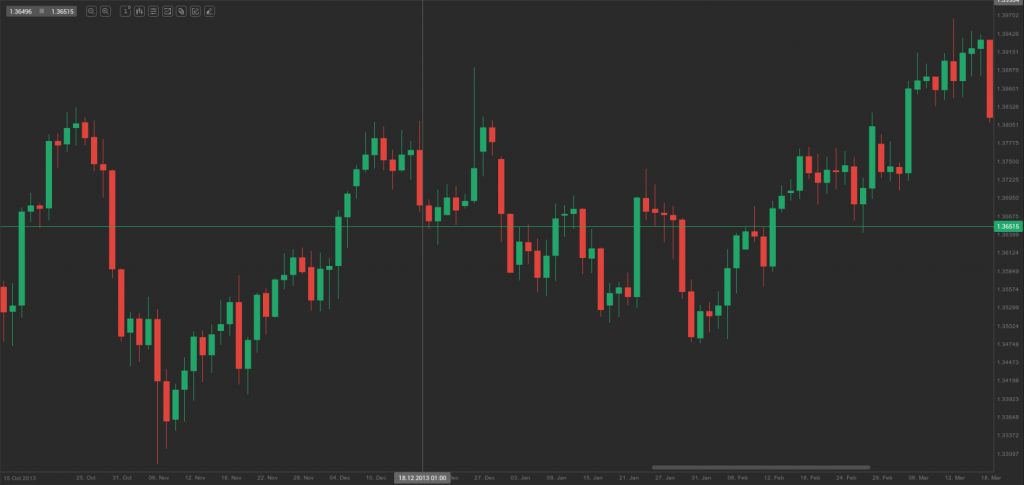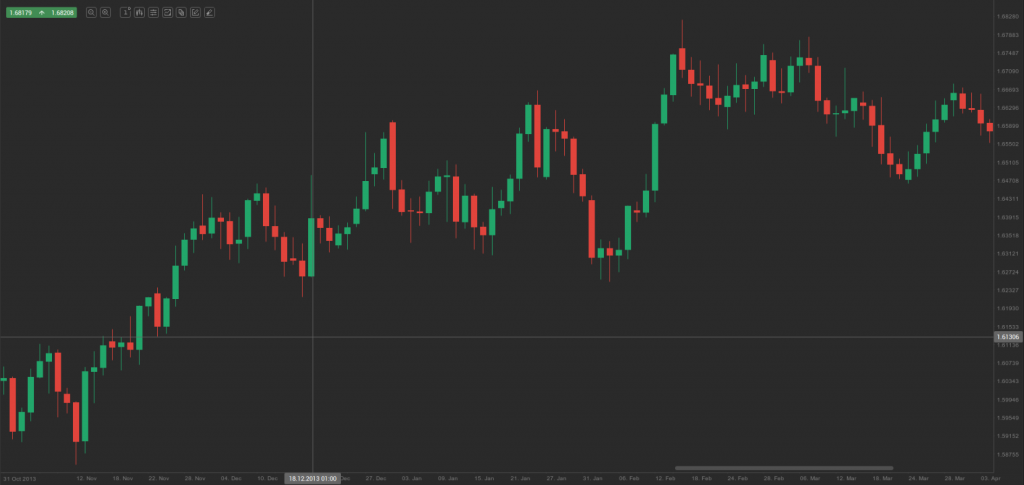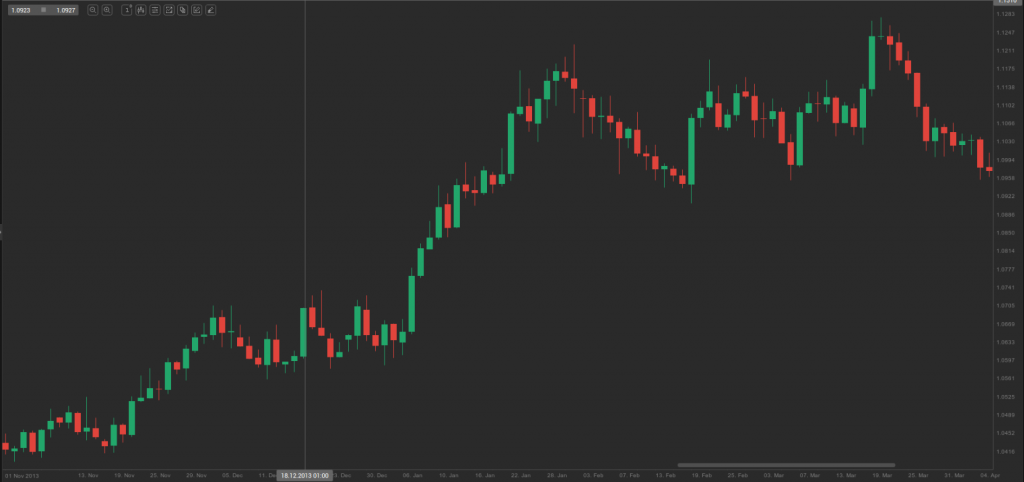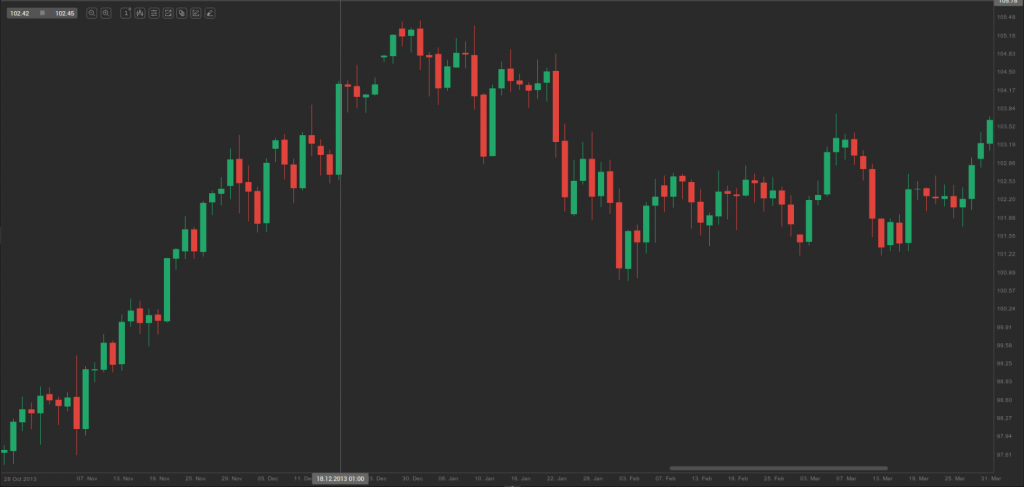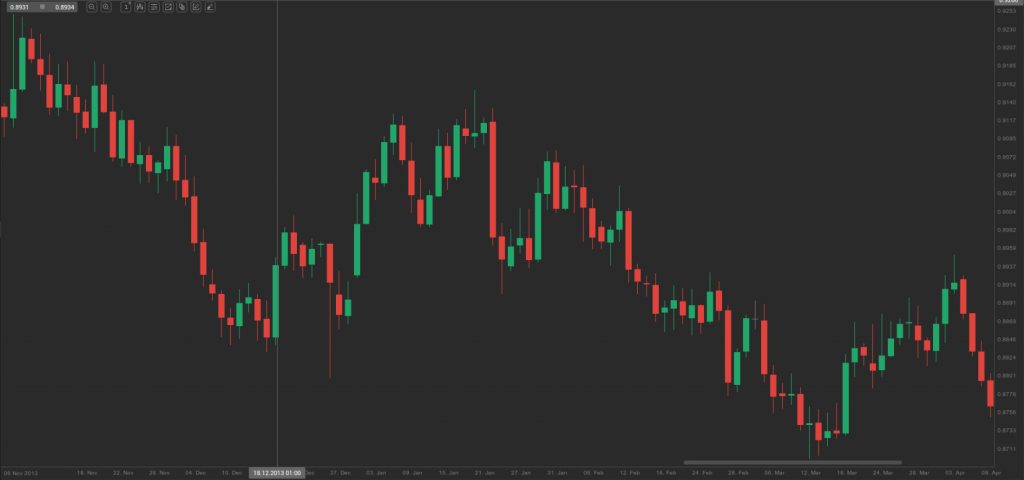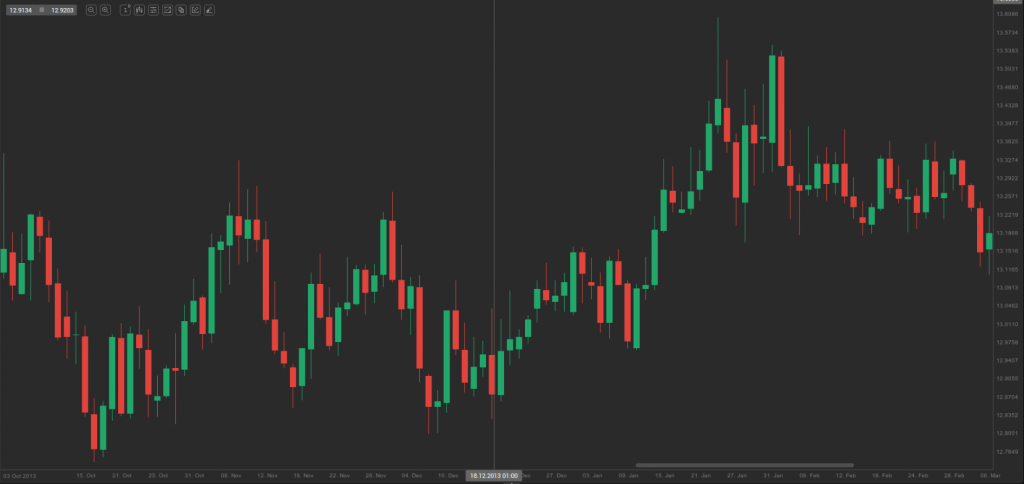Choosing currency pairs according to their components strength differential
This lesson will cover the following
- The importance of examining factors, that may influence both currencies within a pair
- Taking a look at the FOMC policy decision on December 18th 2013
When it comes to trading in the Forex market, you should know by now that a currency is bought or sold against selling or purchasing another one. This means that it is not only the relative strength of the base currency that is important, but also the quote currency. You can learn some of the basics terms in Forex by reading our article “Forex Trading Terms“.
Many traders make the mistake of focusing on the events influencing only one of a crosss two currencies, without taking in notice what is happening with the other. This can have a negative impact on market players performance as factors supporting the quote currency could diminish the effects of positive developments for the base currency or completely offset them, thus confounding your guess the latter will appreciate. And even if the base currency gains ground against its counterpart after a series of good economic data, the strength of the quote currency is likely to determine for how long the base currencys rally will continue and how much it will extend.
Therefore, neglecting the economic conditions or other factors that can play a role in a traded currencys valuation can greatly reduce the probability of a trade and even render it a loser. When going long against a good performing economy, there is a higher chance of failure as each economic indicator can post a positive or at least better-than-expected value, even if analysts forecasts have called for a weak reading. Thus, your currency of choice would either gain less-than-projected or not gain at all, incurring losses. Therefore, going long on a strong economy/weak economy cross (or short on weak economy/strong economy pair) presents you the best chance of maximizing profits while minimizing risk.
Example
Let us take a look at the following example. On December 18th 2013 the Federal Open Market Committee (FOMC) unexpectedly decided to begin scaling back its unprecedented Quantitative Easing program, citing the underlying economic strength. Policy makers decision caught market players off-guard as only a very small number of economists had anticipated such a move, given the recent federal government shutdown, the 7% unemployment rate in November and Janette Yellen taking over as Federal Reserve Chair. Let us take a look at the performance of some of the major currency pairs, following the FOMC policy decision on December 18th 2013. All of the following are daily charts.
AUD/USD
EUR/USD
GBP/USD
USD/CAD
USD/JPY
USD/CHF
USD/MXN
USD/CAD, USD/JPY and USD/MXN advanced more noticeably compared to USD/CHF, while EUR/USD and GBP/USD showed resilience. At the time Bank of England has been keeping monetary policy on hold, while the European Central Bank introduced a rate cut by 0.25 percentage points to a new record low of 0.25% at its meeting in November, after the annualized harmonized CPI in the Euro zone fell to 0.7% in October, or the lowest level since January 2010, boosting concerns over deflation in some countries in the region. AUD/USD have been falling steadily for a few months, as Reserve Bank of Australia maintained its benchmark interest rate unchanged, while on several occasions banks Governor Glenn Stevens made remarks in regard to Australian dollars strength.
